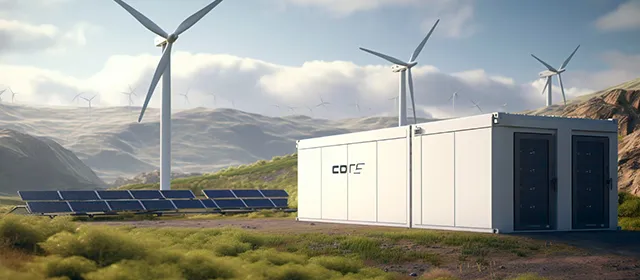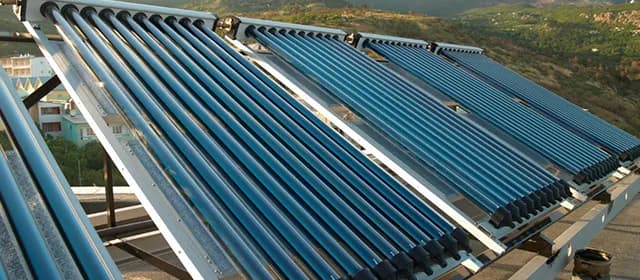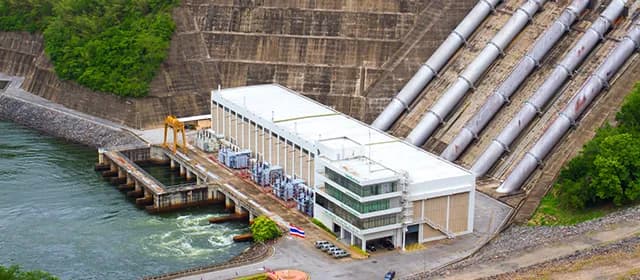Renewable energy adoption is expanding rapidly across the globe. In the United States, grid‑connected energy storage capacity reached 37.4 GW in 2025, reflecting increasing deployment to support solar and wind integration. More utilities and industrial operators are relying on storage solutions to manage variable renewable generation.
This rise in renewable adoption aligns with major advances in energy storage technology, as lithium-ion and flow battery systems now provide longer duration, higher efficiency, and safer operation compared to early-generation systems. Growing deployment of renewable energy and improvements in storage technology are transforming energy storage from a supplemental backup solution to a critical component of grid stability and decarbonization strategies.
According to Kings Research, the global renewable energy storage market is projected to grow from USD 39.16 billion in 2024 to USD 89.06 billion by 2031, exhibiting a CAGR of 12.46 percent during the forecast period. This blog examines the ten leading companies defining the renewable energy storage market, their technology innovations, and recent developments advancing utility, commercial, and industrial energy storage applications.
Top 10 Companies in the Renewable Energy Storage Market
1. General Electric
General Electric provides utility-scale battery energy storage solutions that integrate advanced power conversion systems with scalable lithium iron phosphate battery modules for grid stabilization, renewable energy integration, and peak demand management.
GE’s FLEXINVERTER and FLEXRESERVOIR platforms support a wide range of applications from short-duration frequency regulation to multi-hour renewable smoothing, helping utilities and developers deploy reliable storage with robust digital controls. Its systems are used by independent power producers and grid operators to enhance flexibility and improve renewable capacity utilization.
In May 2025, GE Vernova expanded its utility-scale FLEXINVERTER platform by introducing a new 1.5 kV silicon-carbide solution for battery energy storage systems and extending its 2 kV photovoltaic inverter offering to International Electrotechnical Commission markets. The updates aim to improve electrical efficiency, lower system costs and support broader global deployment of solar and storage projects (source: www.gevernova.com)
2. Delta Electronics, Inc.
Delta Electronics provides integrated energy storage systems combining scalable power conversion units, lithium-ion battery modules, and intelligent energy management software for commercial, industrial, and utility-scale applications.
Its portfolio includes modular storage systems from hundreds of kilowatts to multi-megawatt configurations that support peak shaving, renewable integration, and energy resilience while reducing operational costs for customers transitioning to clean energy. These offerings position Delta as a key contributor to the renewable energy storage market.
In March 2025, Delta signed a memorandum of understanding with LG Energy Solution to secure 4 GWh of U.S.-manufactured battery cells for its upcoming residential energy storage systems, enabling all-in-one storage solutions tailored for U.S. homes. The agreement aims to enhance energy resilience, increase local supply chain integration, and support broader adoption of residential storage in clean energy portfolios.
3. Hitachi Ltd.
Hitachi provides advanced grid energy storage systems that integrate battery modules, power conversion units, and intelligent energy management controls to stabilize supply and support renewable energy output.
Its storage solutions are engineered to balance supply and demand, reduce curtailment of intermittent generation, and enhance grid resilience for utilities and large commercial customers. Hitachi’s systems are deployed in projects that deliver power quality improvements and support decarbonization across regional networks.
In August 2025, Hitachi commissioned the 12 MW, 35.8 MWh Matsuyama Battery Energy Storage System in Matsuyama City, marking its first grid energy storage project in Japan and demonstrating full system delivery from design through installation. The project uses Hitachi Energy’s power conversion platform to smooth supply and demand fluctuations, support renewable integration, and contribute to reliable grid operations (source: www.hitachi.com).
4. Siemens AG
Siemens offers energy storage solutions that integrate advanced battery systems, grid automation, and digital control technologies to enhance grid flexibility and support renewable energy deployment across utility and commercial markets.
Through its solutions, customers can optimize energy dispatch, improve load shifting, and reduce peak power costs with scalable lithium-ion and hybrid storage configurations. Siemens’ offerings are utilized within the utility and commercial segments of the renewable energy storage market.
5. Toshiba
Toshiba develops advanced lithium ion battery technologies and storage systems that support grid services, renewable integration, and industrial applications with high durability and strong safety performance. Its SCiB lithium titanate batteries are designed for rapid charging, long cycle life, and reliable operation in demanding stationary and mobile environments.
In June 2025, Toshiba announced the launch of its next generation SCiB energy storage system featuring improved power density and enhanced safety characteristics for grid support and renewable integration. The system is engineered to deliver stable peak shaving, frequency regulation, and long operational life to strengthen clean energy deployment (source: www.global.toshiba).
6. Eaton Corporation
Eaton supplies energy storage systems combining battery modules, power conversion hardware, and intelligent energy management software to help commercial, industrial, and utility customers integrate renewable generation and improve energy resilience.
Its storage solutions enable strategic dispatch of stored energy, support peak shaving, and provide backup capability while lowering operational costs for facilities adopting clean power assets. EVLO’s platforms represent part of the expanding renewable energy storage market in remote and island grids.
In November 2024, Eaton launched its xStorage battery energy storage system in North America to accelerate decarbonization, maximize onsite renewable utilization, and help communities and businesses shift energy use to lower cost or outage scenarios.
The modular xStorage BESS supports from 250 kWh to 1 MWh of usable energy with microgrid islanding capabilities and digital monitoring features to participate in demand response and grid services programs (source: www.eaton.com)
7. NextEra Energy Resources, LLC.
NextEra Energy Resources develops and operates utility-scale renewable generation and energy storage projects that pair large wind and solar farms with battery systems to deliver flexible, dispatchable clean power.
The company’s project portfolio and development expertise help utilities and commercial customers integrate intermittent renewables while providing capacity, ancillary services, and seasonal dispatch options. NextEra’s teams deploy hybrid plant designs that reduce curtailment and increase firm energy delivery for grid operators and large corporate offtakers.
In August 2025, NextEra Energy Resources received approval from the Utah Inland Port Authority for a 200 MW battery energy storage system in Salt Lake City to be developed by its subsidiary Dominguez Energy Storage, LLC. The approval clears a major permitting hurdle for the project and positions the BESS to provide grid capacity and support renewable integration in the region.
8. EVLO Energy Storage Inc.
EVLO Energy Storage Inc. supplies utility‑scale battery energy storage systems that integrate high‑density lithium‑ion modules with power conversion systems and advanced energy management software to support renewable integration, grid resiliency, and energy dispatch optimization.
Its EVLO SYNERGY and EVLOFLEX platforms are engineered for scalable deployment across utility, commercial and hybrid renewable applications where reliable storage and flexible operation are critical.
In October 2025, EVLO completed commissioning of its first of three energy storage projects for the American Samoa Power Authority, delivering a 6 MW/24 MWh battery system designed to support renewable energy integration and improve grid stability in the territory. The milestone underscores EVLO’s ability to deliver turn‑key storage solutions in remote and island grids where renewable penetration and resilience are priorities.
9. ABB
ABB provides integrated energy storage solutions combining battery systems, power conversion technology, and digital control platforms that help commercial, industrial, and utility customers increase renewable integration and grid reliability.
Its offerings include modular storage units, advanced system controls, and services designed to optimize performance while reducing implementation complexity. ABB’s energy storage solutions are implemented across multiple segments of the renewable energy storage market.
In May 2025, ABB introduced its Battery Energy Storage Systems‑as‑a‑Service model to simplify renewable energy adoption by offering storage deployment with no upfront capital cost and comprehensive lifecycle support. The service is engineered to improve energy resilience and accelerate clean energy integration for customers of all sizes (source: new.abb.com).
10. HERO FUTURE ENERGIES
Hero Future Energies is a renewable energy developer focused on utility‑scale solar, wind, hybrid power, and energy storage integrated solutions that serve commercial, industrial, and grid‑connected applications.
The company designs projects combining generation with energy storage systems to provide firm, dispatchable clean power and enhance grid reliability as part of India’s broader renewable transition strategy.
In May 2025, Hero Future Energies signed a power purchase agreement with Solar Energy Corporation of India Limited (SECI) for a 270 MW solar project integrated with energy storage under the ISTS XVII auction, reflecting its capability to deliver large solar‑plus‑storage contracts at competitive tariffs. The project combines solar generation with battery energy storage systems to help ensure more reliable renewable power supply during non‑peak hours.
Conclusion
The renewable energy storage market is experiencing rapid growth as global demand for flexible, reliable, and clean power accelerates. Advances in battery technology, modular storage systems, and intelligent energy management solutions are enabling utilities, commercial operators, and industrial users to integrate higher shares of renewable energy while enhancing grid stability.
Leading companies including GE Vernova, Delta Electronics, Hitachi, Siemens, Toshiba, EVLO, ABB, and Hero Future Energies are driving innovation with scalable, efficient, and resilient storage platforms. As energy systems worldwide transition toward decarbonization and resilience, these manufacturers are positioning themselves to deliver critical infrastructure that supports both immediate energy needs and long-term sustainability goals.




